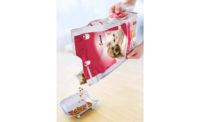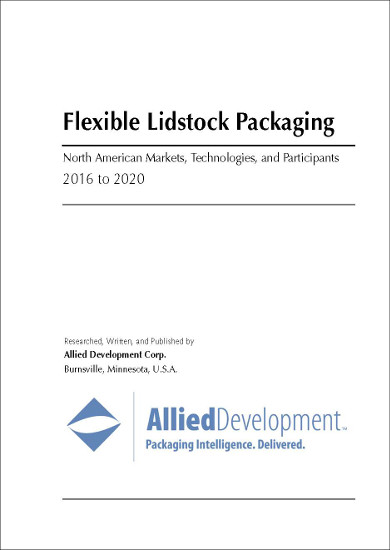Most machinery manufacturers design, engineer and build equipment according to how they perceive the overall market, and then competition follows suit. It is the old cookie-cutter approach. Each supplier may have three or four models using the same components with similar designs in order to take advantage of the economy of volume purchasing. However, converters are not always competing in the same markets or for the same customers. There are advantages to tailoring equipment to your specific requirements and using component suppliers you have found perform better in your operation and with your employees. It can be to your advantage to work with a company that will listen to your needs and be flexible to meet your requirements where possible.
Additionally, there is the trend to buy what your competitor has from a marketing standpoint to be able to say to your customers you have the same equipment, and therefore you can compete on the same level. Converters sometimes pay more for this trend when the equipment suppliers today offer nearly the same technology. Equipment assets can be a great enabler, both strategically and to further your performance goals. It is about performing lean. Make sure your equipment strategy is aligned with this outcome and there is a decent ROI upfront so that there is financial room to maneuver later.
New equipment purchasing, to a degree, is irreversible. You often buy equipment on a forecast of business needs — and we know forecasts are frequently wrong and needs change over time. Once you have purchased it, you cannot just give it back. Additionally, the people who buy the equipment in most cases do not operate it in production on a day-to-day basis. When the equipment is installed in your environment with your employees, the challenge is now to make it perform according to the purchased criteria.
The traditional packaging supply chain has been able to manage high volume. The most pressing challenge for converters today is to manage shorter runs. Companies with an infrastructure tailored for volume typically have a difficult time handling shorter runs with flexibility and lower costs. This problem creates opportunities for companies that can more effectively manage the shorter runs, as well as produce high volume orders profitably. Some companies are working to reengineer their businesses to better manage volume and frequency, and new machinery could help with that.
Continuing structural changes in the packaging industry with consolidation among converters and increased material costs, coupled with shorter runs, have significantly added pressure on prices and margins. The cost of capital equipment and financing is an important consideration.
Flexo Presses Attempt to Respond to the Demands
Over the years, a number of flexo press manufacturers have entered the market with a mid-web central impression (CI) press, but these attempts failed to penetrate the market. The approach was a low-cost, lower speed press, based on the theory that speed should not be an issue for short runs.
This concept did not remain viable for the constantly changing market, however. High-speed flexo has become a trend but has had its challenges. Ink containment, slinging and ink misting, together with proper fill and ink release from anilox cells at higher speeds, require special converter expertise. The wider and faster you go, the more plate and anilox sleeve accuracy becomes a problem, leading to critical print pressures and even bounce problems throughout all speeds.
Then there is the approach of a robotic press change that can pre-store multiple jobs in a holding rack, on-the-ready for the next job change. This high-speed press concept has had some acceptance, mainly with larger converters for both short and long runs. The high cost of this approach, however, has been a drawback for many converters.
Next came the approach of going wider with a combination of SKUs across a web, but this was never met with widespread acceptance from a practical point of view due to the scheduling problems it can pose. With so many innovative mid-web presses that have come onto the market, none have truly addressed the short-run, SKU proliferation problem that the packaging industry is currently facing.
Mid-Web Flexo as a Solution
Mid-web flexo can be defined several ways, but we will define it as 27 in. (670 mm.), 34 in. (870 mm.) web widths. A mid-web press can contribute greatly to reduced print impression pressures. Total indicated run out (TIR) can be tighter for a mid-web press, leading to lower impression settings between the anilox and plate that contributes to sharper print.
Why is this important for shorter runs? Because it will enable you to more consistently hit set target points on press using extended gamut and HD flexo, to lower cost. With the advent of HD flexo, expanding the use of extended gamut or G7 implementation in combination with gray component replacement (GCR), the mid web concept takes on an entirely new appeal for shorter runs. By combining higher printing speeds with the ability to better maintain control of the print process, it is possible to meet the demands of the changing needs of the packaging supply chain.
Color matching on press is one of the biggest contributors of material waste and press downtime, so you have to factor in higher costs to gain improved skill sets versus savings in material waste and improved press output. You can also achieve higher print quality with higher screens, with less ink waste from run to run through better ink management, less expensive flexo plate costs, reduced plate mounting time and materials, and an overall lower energy consumption.
Changing plate and anilox sleeves is easier on this machine because of weight and size. Downgauging to thinner materials is easier and better handled, and overall material waste during set up is lower, all due to the width of the substrate.
Job Changing
While running some colors in production you can safely make ready colors not being used for the next job. The decks not being used are shut down entirely with nothing moving so the operator can safely change sleeves and inks. With an automatic wash-up system, you can wash up and change colors not being used while the press is running. You have the ability to run multiple SKUs across the web because you can drop in different SKUs according to each run length at intervals very quickly.
You can run extended gamut colors in some stations while changing spot colors in stations not being used. Servo driven register control holds +/- 0.10 microns (.004”) on all materials. There’s the ability to run extremely high quality, HD flexo process screens. There are vision cameras and fiber optic sensors placed at strategic points of the press. There’s the ability to run paper, film, foil and paperboard. There’s the ability to handle large print repeats with an operator friendly low profile.
Electron Beam and UV/LED for Mid-Web Short Runs
In the past there have been physiological constraints using UV inks for indirect food contact. UV inks have not been widely accepted for flexible packaging even though ink companies continue to make improvements to gain market acceptance. Water-based inks have just not measured up to quality and speed. Solvent inks requiring pollution controls have not been the widespread choice for most narrow web companies, even though solvent inks are the primary choice of wide web converters.
New developments with electron beam ink systems and UV/LED inks that utilize low migration/low odor FoodSafe Inks were widely discussed at the recent Radtech conference in Chicago. Using UV/LED inks and an “all servo” stack press, you do not have to be concerned with heat against the CI drum. A stack press can be a lower profile without high ceiling requirements. The shorter web path can drastically reduce the material waste during setup when compared to an inline press. Opaque white inks are not the best at this point, but can be applied using the first or last station with a conventional flexo ink.
By using a mid-web “all servo” stack press, you now have the ability to run multiple SKUs across with different run lengths because you can drop in different SKUs according to each run length at intervals very quickly using standard ink sets.
Ink Flow Advancements to SKU Proliferation
Ink usage and ink waste needs to be closely considered with today’s work flows. Constant Ink Flow Technology (CIFT), with individual ink flow control at each color station is a key feature. With this, you select the colors to be used in running a job but can clean colors not being used while the press is running.
Advanced wash-up systems perform automatic ink station wash-ups in approximately 6-10 minutes. With an ink pump, there can be a constant and even flow of ink and wash-up solution through the enclosed chamber doctor blade and ink hoses. You can simultaneously clean all chosen print stations automatically while the operator attends to other duties. Automatic ink viscosity and temperature control is another key feature. Once the press is set up and on color, the auto viscosity controls continuously adjust the inks to keep them printing on color for the entire job. With an automatic ink temperature control system, you will stay on color with constant control of both ink temperatures and viscosity. Ink flow settings can be stored for repeat runs, thus eliminating the time it takes to input this information each time.
Novaflex




